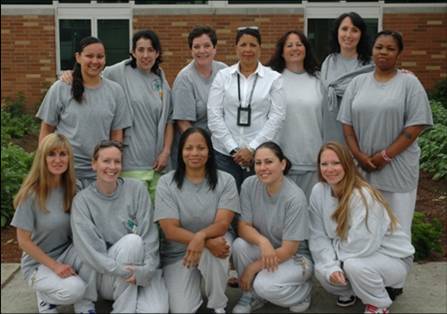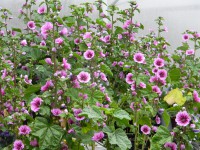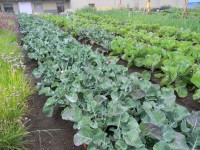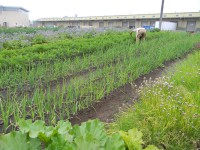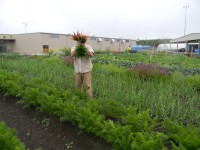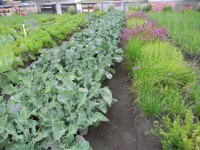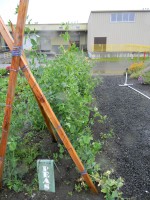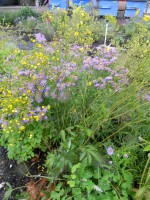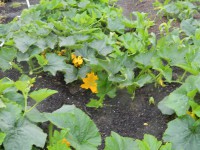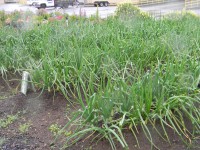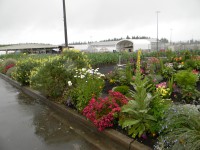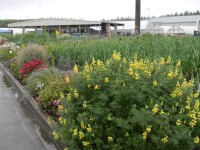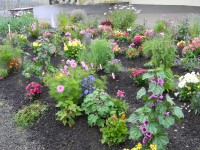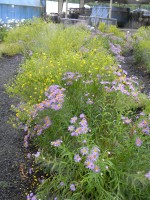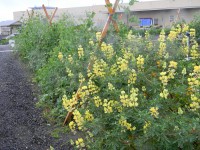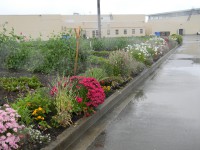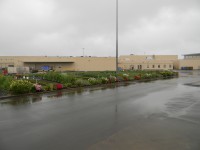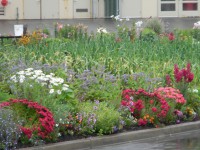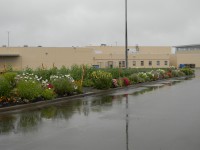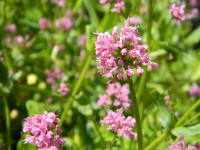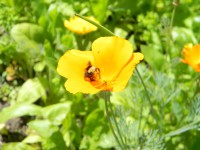By SPP Project Manager Kelli Bush
A French documentary crew recently visited Western Washington to film a new episode for their National Geographic series “Guardians of Nature”. The episode will include segments featuring the Sustainable Prisons Project (SPP) Oregon Spotted Frog Program and riparian forest research conducted by SPP Co-Director Dr. Carri LeRoy.
The film crew spent an entire day with the SPP Oregon Spotted Frog Program team. Filming began at Cedar Creek Correction Center in the morning. SPP staff and inmates walked the crew through the daily tasks associated with caring for the endangered frogs. Prison Superintendent Doug Cole shared his thoughts on the benefits of the program from a prison perspective.
The afternoon was spent at West Rocky Prairie in the greater Olympia area. West Rocky Prairie is home to a wild population of Oregon spotted frogs. Dr. Marc Hayes, senior biologist at the Washington Department of Fish and Wildlife, led the group to a wetland location where he netted two juveniles and one adult frog to show the film crew. He explained how factors such as habitat loss and bull frog predation have led to the decline of the species and discussed current efforts to recover the native population. The day concluded with summary discussion of the Sustainable Prisons Project and the many benefits of including incarcerated individuals as partners in conservation and sustainability work.
The film crew also spent a day with Dr. Carri LeRoy filming riparian and stream science research on the Hoh River. The Hoh River is a braided gravel stream channel fed from the glaciers of the Olympic Mountains and flowing through densely vegetated temperate rainforest and cottonwood (Populus trichocarpa) gallery forests. Dr. LeRoy’s research on how the genetics of cottonwood trees can influence both other members of the ecological community associated with the trees and the ecosystem-level processes of riparian forests was the focus of the interview. Although it might seem impossible for something as small as a gene to have an effect on a whole ecosystem, there are many examples of the strong organizing power of genes. Genes can influence the insects that live in tree canopies, bird predation and nest building, deer browsing, soil organisms, nutrient cycling, carbon flux, water use and even adjacent stream communities and ecosystem processes. Dr. LeRoy’s “Genes-to-ecosystems” research involves examining the interactions between tree genes, forests and streams through leaf litter fall.
With the dynamic backdrop of ice-blue water and lush vegetation she demonstrated methods for measuring soil respiration (a combination of root respiration and microbial/insect respiration) at the base of a large cottonwood tree. In addition, she placed leaf litter bags of known tree genetics into a small tributary stream of the Hoh River and collected aquatic insects from the cobbly bottom. It was a gorgeous summer day spent in one of the most pristine river systems in Washington State.
The crew has featured beautiful locations all of the world, but this will be the first episode filmed in the US. The show is primarily carried on stations throughout Europe. We were thrilled to have the opportunity to share our work with “Guardians of Nature” and an audience on the other side of the planet. The two segments will likely be available early spring 2012 and will be posted to our website as soon as they are available.


